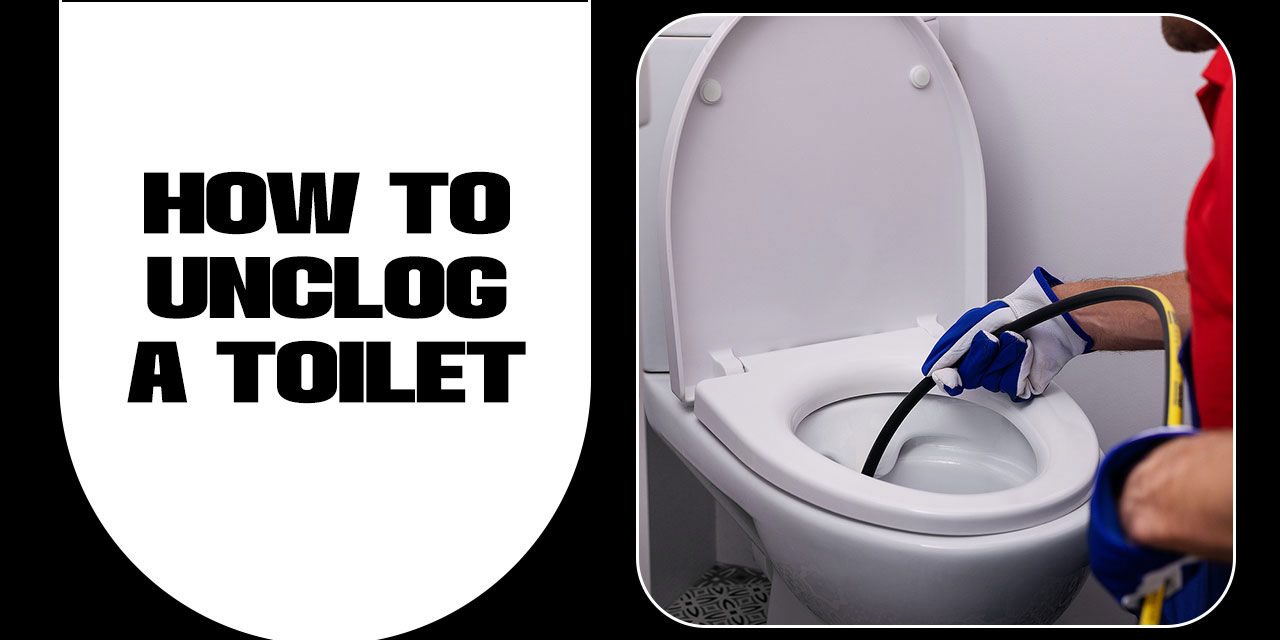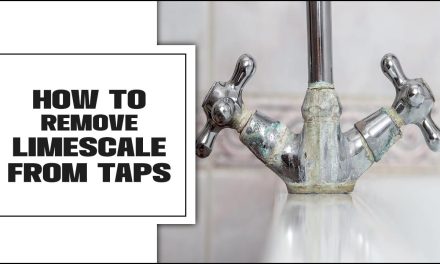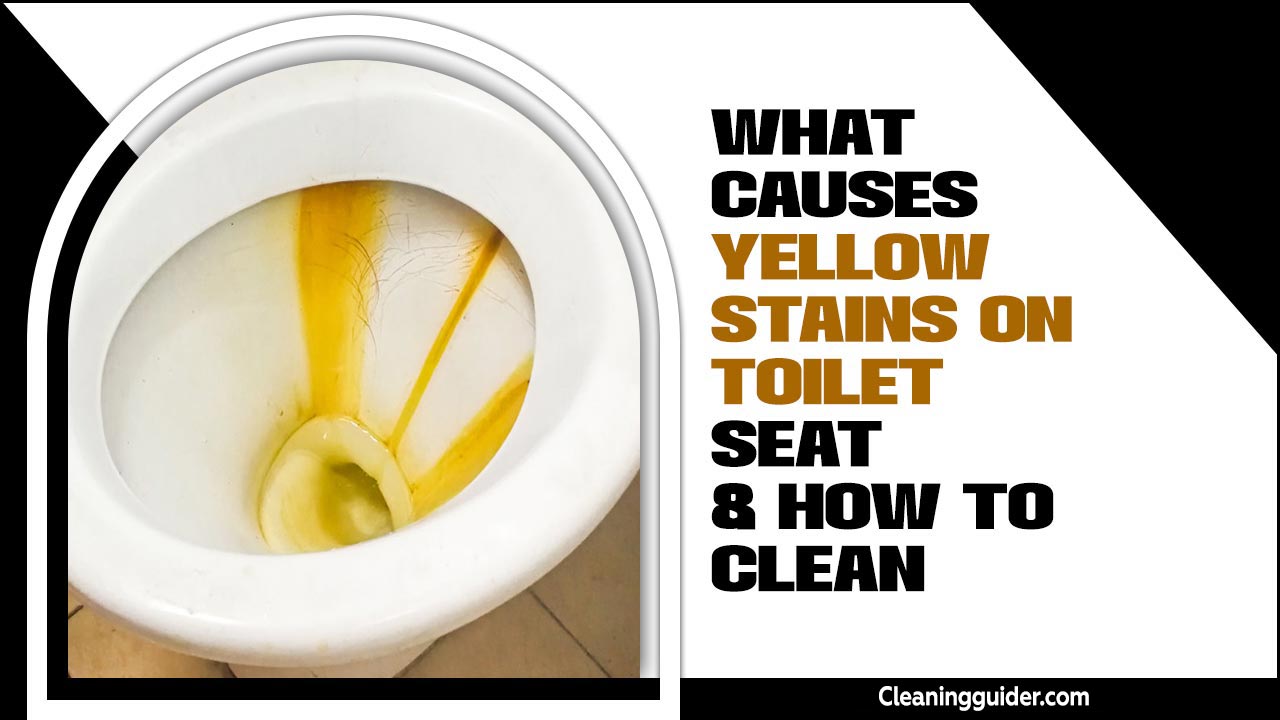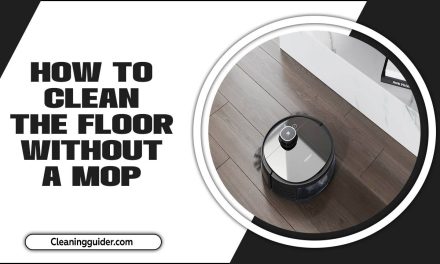Clogged toilets are a common and often inconvenient household problem. Whether it’s caused by excessive toilet paper, foreign objects, or a faulty plumbing system, a clogged toilet can disrupt your daily routine and create an unpleasant odour.
The thought of unclogging a toilet may seem daunting, but with the right tools and techniques, it can be a relatively simple task. Here, we will walk you through the step-by-step process of unclogging a toilet, providing tips and tricks to ensure a successful and efficient result.
From identifying the cause of the clog to using household items and how to unclog a toilet, this article aims to equip you with the knowledge and skills to tackle this issue with confidence.
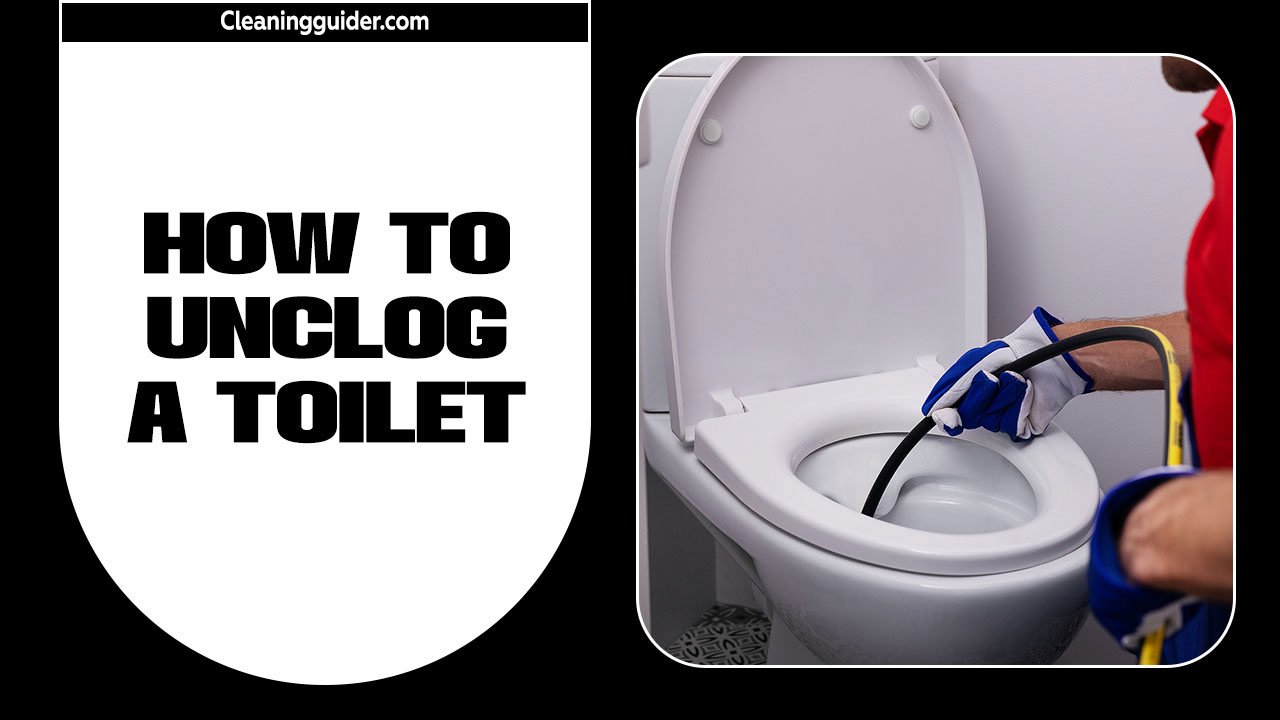
Necessary Items
When faced with the unfortunate occurrence of a clogged toilet, it is essential to have a clear understanding of the necessary items and steps required to address the issue effectively. Firstly, it is imperative to gather the appropriate tools and materials before attempting any unclogging procedure. These necessary items include a plunger, rubber gloves, a bucket, and a toilet auger. Unclogging a toilet usually requires a few necessary items:
- Plunger: A plunger is an essential tool for unclogging a toilet. Make sure to use a toilet plunger, which has a flange that helps create a seal around the drain opening.
- Rubber Gloves: It’s important to protect your hands from any potential mess. Rubber gloves will keep your hands clean and prevent the spread of germs.
- Bucket: Having a bucket nearby is useful for removing excess water from the toilet bowl before attempting to unclog it. It can help prevent overflowing and minimize the mess.
- Toilet Auger: If the plunger doesn’t work, a toilet auger (also known as a plumber’s snake) can be used. It helps to break up and remove stubborn clogs that are deeper in the drain.
- Hot Water And Dish Soap: In some cases, pouring hot water mixed with a small amount of dish soap into the toilet bowl can help loosen the
How To Unclog A Toilet – 4 Easy Ways
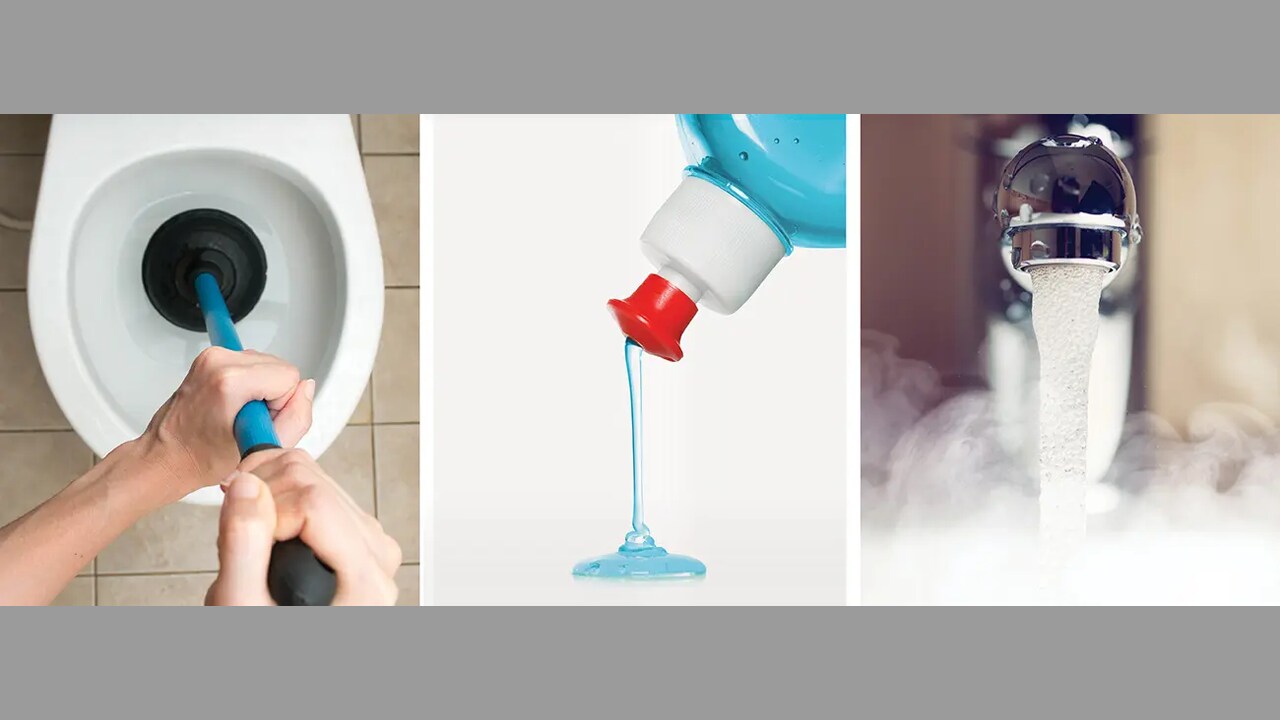
In today’s discourse on household maintenance, there exists a myriad of challenges that homeowners must confront. One such challenge, often considered an unpleasant and inconvenient affair, is the clogging of a toilet. The obstruction of the toilet’s drainage system can lead to a disruption in the daily functioning of a household, necessitating swift and effective remedial action.
How to unclog a toilet, several strategies can be employed, each offering a unique approach to restoring the optimal flow of water. Initially, one may attempt to utilize a plunger, a commonly found tool specifically designed for this purpose.
By creating a seal around the drain and applying a forceful up-and-down motion, the plunger can generate sufficient pressure to dislodge the obstruction. Alternatively, the use of a plumbing snake, a flexible and elongated metal wire, can be employed to dislodge the blockage physically.
1. Make Room In The Bowl
Make room in the bowl” is a phrase commonly used when unclogging a toilet. It refers to creating space in the toilet bowl by removing any excess water or debris that may be causing the clog. This can be done by using a plunger, a toilet auger, or a combination of both. It is important to be cautious and follow proper safety procedures when attempting to unclog a toilet to avoid any potential damage or injury.
2. Add Soap
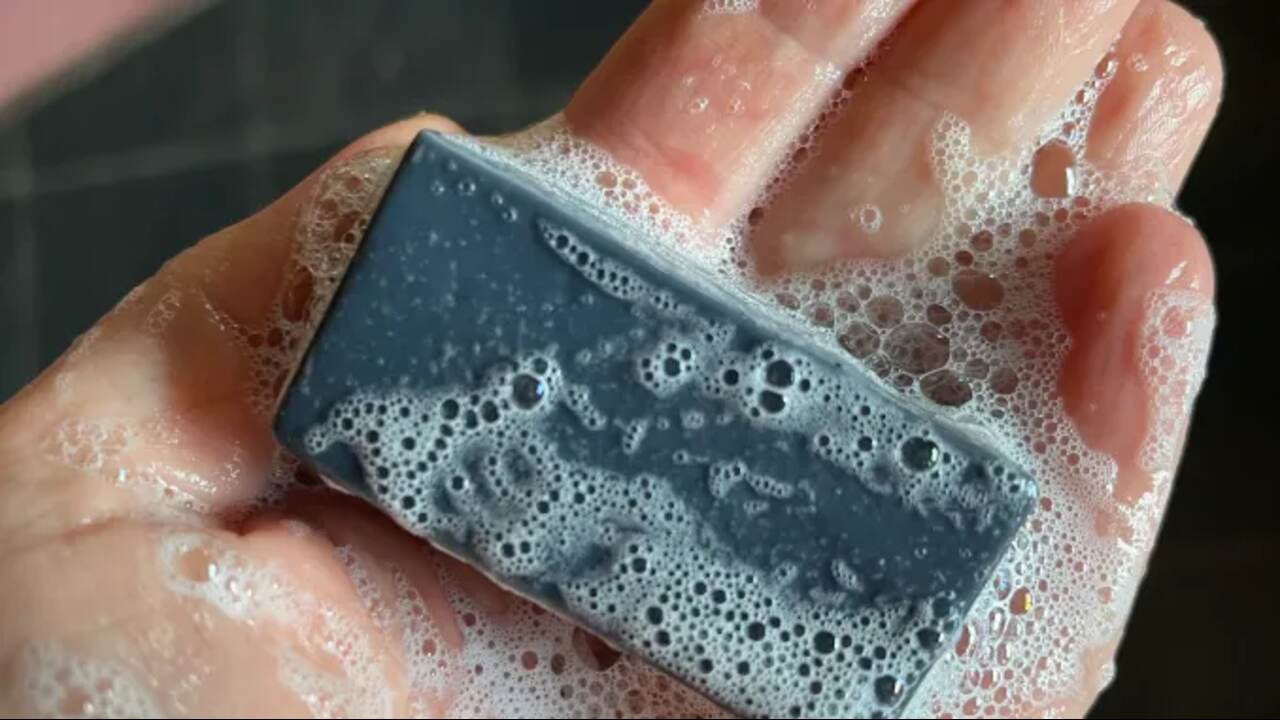
Adding soap to a clogged toilet can be an effective and simple solution to unclog it. Soap works by reducing the friction between the clog and the pipe, allowing the blockage to slide through more easily. To use this method, start by pouring a generous amount of liquid dish soap or shampoo into the toilet bowl. Let it sit for a few minutes to allow the soap to penetrate the clog.
Then, carefully pour hot water into the toilet bowl from a height of about waist level. The hot water combined with the soap will create a lubricating effect, helping to dislodge the clog and allow it to flow through the pipes. It’s important to note that this method may not work for all types of clogs, particularly those caused by solid objects or more severe blockages. In such cases, it is advisable to seek professional plumbing assistance.
3. Add Hot Water

To unclog a toilet, one effective method is to add hot water. This simple yet powerful solution can help break down and dislodge stubborn clogs. Here’s how to do it: First, ensure that the toilet bowl is not filled with water. If it is, you may need to remove some of the excess water using a bucket or cup.
Next, heat a pot or kettle of water until it is hot but not boiling. Carefully pour the hot water into the toilet bowl, aiming for the center of the bowl where the clog is likely located. The hot water will help to soften and loosen the clog, making it easier to flush away.
Allow the hot water to sit in the toilet bowl for a few minutes to work its magic. Finally, use a plunger to gently plunge the toilet, creating pressure and helping to dislodge the clog. Repeat this process as needed until the clog is cleared and the toilet flushes properly. Remember to exercise
4. Test Your Work
Testing your work is an important step in ensuring that you have successfully unclogged a toilet. After attempting to unclog the toilet using various methods, such as plunging or using a toilet auger, it is crucial to test if the clog has been fully cleared.
To do this, flush the toilet and observe if the water drains smoothly and without any signs of blockage. If the water flows freely and the toilet bowl fills up and empties as it should, then you can conclude that your unclogging efforts have been successful.
However, if the water continues to drain slowly or if the toilet becomes clogged again, it may be necessary to repeat the unclogging process or seek professional assistance. Testing your work is essential in order to prevent any further issues and ensure the proper functioning of the toilet.
How To Unclog Your Toilet With Coat Hanger

Unclogging a toilet can be a daunting task that many individuals may find uncomfortable or even embarrassing to discuss. However, it is a common issue that can occur due to various reasons, such as excessive toilet paper usage or the accidental flushing of non-flushable items.
In such situations, knowing how to unclog a toilet effectively can be invaluable knowledge. Here is some information on how to unclog your toilet with a coat hanger:
- Gather The Necessary Tools: You will need a wire coat hanger, rubber gloves, and a bucket or plastic bag.
- Straighten The Coat Hanger: Unwind the coat hanger until it becomes a long, straight wire. Make sure to remove any plastic or paper covering from the hanger.
- Put On Rubber Gloves: To protect your hands from any bacteria or sewage, it’s important to wear rubber gloves before proceeding.
- Insert The Coat Hanger Into The Toilet: Carefully insert the straightened end of the coat hanger into the toilet bowl. Try to push it through the clog gently while avoiding any forceful movements that could damage the toilet.
- Wiggle And Maneuver The Coat Hanger: Once the coat hanger is inside the toilet, use a wiggling motion to try and dislodge the clog.
Using A Toilet Auger Or Snake
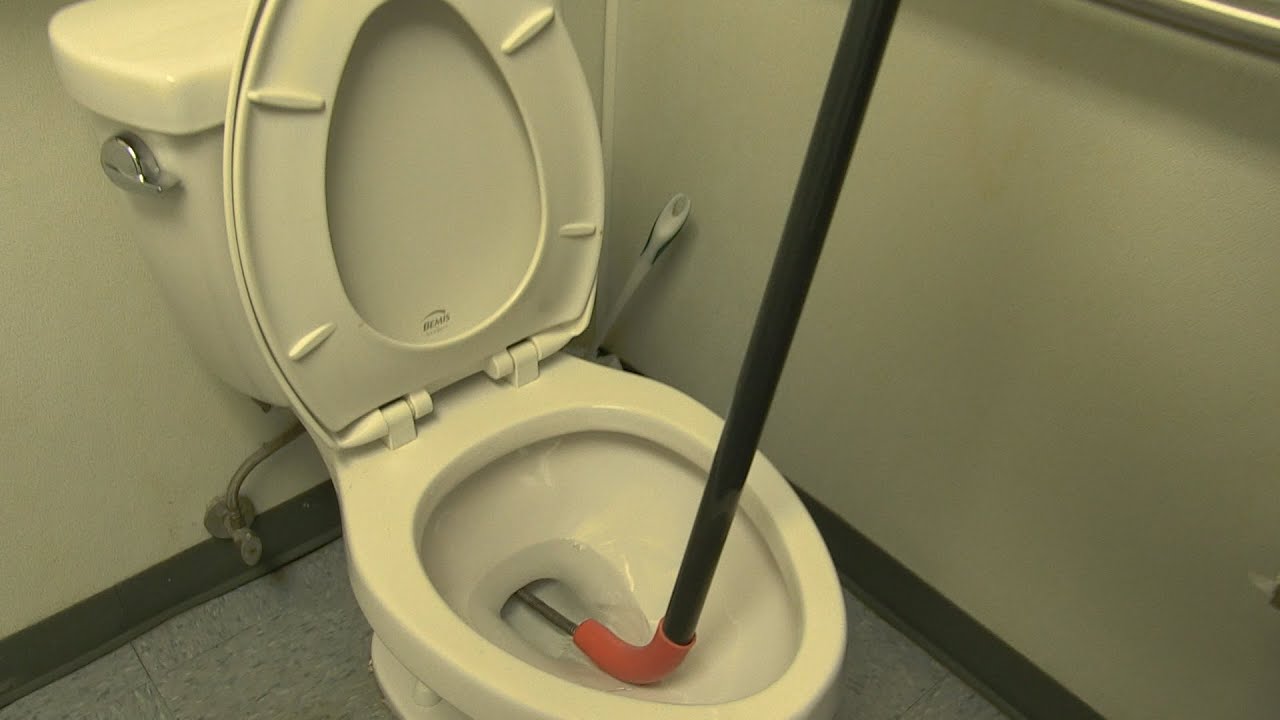
Using a toilet auger or snake is a practical and efficient method for resolving clogs and blockages within the toilet drainage system. A toilet auger, also famous as a toilet snake, is a flexible tool schematic to navigate through the twists and turns of the toilet’s plumbing. This tool consists of a long, coiled wire with a handle at one end and a corkscrew-like tip at the other. Here is some information on how to use it:
- Safety First: Before starting, put on gloves and protect the surrounding area with old towels or newspaper to avoid any mess.
- Insert The Auger: Extend the auger’s cable by rotating the handle clockwise. Insert the curved end of the auger into the toilet bowl, making sure it goes in smoothly.
- Rotate And Push: Once the drill is inside the toilet, rotate the handle counterclockwise while gently pushing the cable forward. This will help the drill navigate through the clog.
- Break Up The Clog: As you rotate and push the drill, you may feel resistance or hear a crunching sound. This means the drill is breaking up the clog. Continue rotating and pushing until you no longer feel any resistance.
Preventing Toilet Clogs In The Future
Preventing toilet clogs in the future is an essential aspect of maintaining proper sanitation and efficient plumbing systems. Recognizing the significance of this issue, it becomes imperative to adopt effective strategies to mitigate the occurrence of such clogs. To prevent toilet clogs in the future, there are several measures you can take:
- Be Mindful Of What You Flush: Avoid flushing anything other than toilet paper and human waste. Items like paper towels, sanitary products, wipes, and excessive amounts of toilet paper can easily cause clogs.
- Use Less Toilet Paper: Use only the necessary amount of toilet paper to avoid excessive accumulation and potential clogs. Consider using less-ply or thinner toilet paper if clogs are a recurring problem.
- Install A Toilet Paper Holder With A Built-In Dispenser: This can help control the amount of toilet paper used and prevent excessive amounts from being flushed at once.
- Educate Household Members: Teach everyone in your household about what can and cannot be flushed down the toilet. Children, in particular, may need guidance on this matter.
- Provide A Waste Bin: Place a small waste bin next to the toilet to encourage the disposal of items like wipes, cotton balls, dental floss,
Troubleshooting Tips For Persistent Clogs
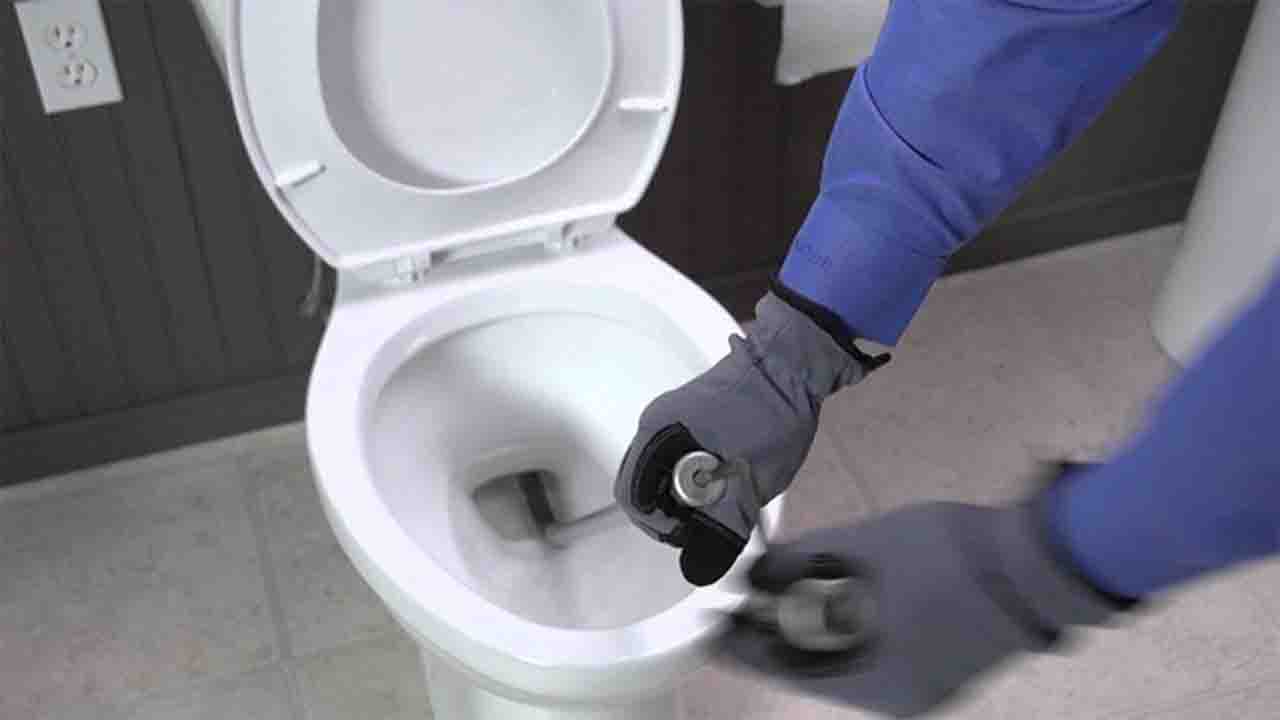
Persistent clogs are a common plumbing issue that can cause significant disruptions in household activities. Understanding the underlying causes of persistent clogs is essential for effectively addressing and preventing these problems. Clogs occur when materials such as hair, grease, food particles, and soap scum accumulate and obstruct the flow of water through the pipes. Troubleshooting Tips for Persistent Clogs:
- Use A Plunger: Start by placing the plunger over the toilet drain and firmly push down, then pull up rapidly. Repeat this motion several times to create suction and dislodge the clog.
- Use A Toilet Auger: If the plunger doesn’t work, consider using a toilet auger. Insert the auger into the drain and twist it in a clockwise motion to break up the clog.
- Hot Water And Dish Soap: Pour a generous amount of dish soap into the toilet bowl, followed by hot water (not boiling). Let it sit for a few minutes, and then flush the toilet. The combination of soap and hot water can help break down the clog.
- Baking Soda And Vinegar: Mix equal parts of baking soda and vinegar in a cup. Pour the mixture into the toilet bowl and let it sit for about 30 minutes.
Conclusion
Unclogging a toilet may seem like a daunting task, but with the right tools and techniques, it can be easily remedied. Remember to always start with a plunger and use gentle, consistent pressure to dislodge the clog. Shut off the water supply to the toilet and drain the tank and bowl.
Use a wrench to loosen the bolts securing the toilet to the floor. Carefully lift the toilet and place it on a protective surface. From here, you can access the drainpipe and remove any obstructions using a gloved hand. If that does not work, try using a plumbing snake or a homemade solution of hot water and dish soap.
To prevent future clogs, be mindful of what is being flushed and consider using a toilet auger for deeper clogs. With these tips in mind, you can confidently handle any clogged toilet situation in a timely and efficient manner. We hope you understand how to unclog a toilet.
FAQ
1.What Are Some Common Household Items That Can Be Used To Unclog A Toilet?
Ans: Some common household items that can be handy to unclog a toilet are a plunger, a wire coat hanger, dish soap, hot water, or a combination of baking soda and vinegar.
2.What Are The Steps Involved In Using A Plunger To Unclog A Toilet Effectively?
Ans: To effectively unclog a toilet using a plunger, start by ensuring the plunger is clean and free of debris. Place the plunger over the drain hole in the toilet bowl, making sure it covers the entire area. Push down firmly and then pull up forcefully to create suction. Repeat this plunging motion several times, maintaining a tight seal around the drain.
3.Are There Any Specific Techniques Or Tips To Consider When Using A Toilet Auger To Unclog A Toilet?
Ans: When using a toilet auger to unclog a toilet, there are a few techniques and tips to consider. First, wear rubber gloves to protect your hands from any potential mess. Next, carefully insert the drill into the toilet bowl and gradually push it down until you feel resistance. Once you feel resistance, rotate the auger handle clockwise to break up the clog.
4.Are There Any Natural Or Homemade Remedies That Can Be Used To Unclog A Toilet?
Ans: Yes, several natural or homemade remedies can be handy to unclog a toilet. One method is to pour a mixture of baking soda and vinegar into the toilet bowl, which can help break down the clog. Another option is to use a combination of dish soap and hot water, pouring it into the toilet and letting it sit for a while before attempting to flush.
5.What Are Some Preventative Measures That Can Be Taken To Avoid Toilet Clogs In The Future?
Ans: Some preventative measures to avoid toilet clogs in the future include using less toilet paper, avoiding flushing anything other than toilet paper and human waste, installing a toilet paper holder with a built-in dispenser to regulate usage, using a plunger regularly to prevent buildup, not flushing items like wipes, cotton balls, or feminine hygiene products, and ensuring the toilet has enough water to create a strong flush.

